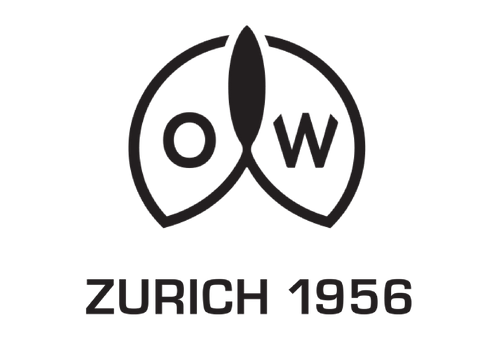Let's go right back to where it all began. From 55 Stockerstrasse, on the northern tip of Lake Zurich, to customers around the globe – the story of how Ollech & Wajs became known the world over in less than a decade.
In 1956, when Joseph Ollech and Albert Wajs formed a watch company, the Swiss economy was as good as it had ever been. Post-war prosperity saw income and consumer spending hit record highs. Nevertheless, it was a bold decision to take out a lease on a ground-floor premises on the prestigious Stockerstrasse in the heart of Zurich, indicative of the young entrepreneurs’ ambition for their new business.
For the first several months, Ollech and Wajs sold watches from well-known Swiss brands such as Omega and Breitling. (This would be the start of a lifelong friendship with Willy Breitling, which would 20 years later lead to Ollech & Wajs acquiring most of Breitling’s tooling and stock parts, and the production rights to the iconic Navitimer. But that’s a story for another day.) Despite their impressive new address, shop space at 55 Stockerstrasse was limited, with a retail counter just one metre long. This did not matter; the partners had no intention of being only watch resellers – they had already begun drawing up plans for their own line of watches.
Albert Wajs’s passion for watches started soon after he arrived, aged just 12, as a refugee in Switzerland.One of the first things he noticed was that everyone wore a wristwatch – a luxury well beyond the means of his family. Wajs longed to own one of his own and never passed the window of one of Zurich’s plentiful watch dealers without stopping to study every model on display.
Neither Ollech nor Wajs came from a long line of watchmakers or had served lengthy apprenticeships in the industry. Unindoctrinated and unburdened by convention, they were free to follow their instincts. Doubtless, their humble backgrounds helped define the purpose of their new enterprise: they wanted to build a business around the democratisation of fine-quality Swiss watches. They were certain that, if they could offer the right products at the right price, there would be room for another brand in the market.
Their inaugural range of utilitarian, durable and highly water-resistant watches was manufactured under the name ‘OWZ’ and was marketed directly to professional and sporting communities such as the growing profusion of scuba clubs and organisations. Another untapped local market was the transient workforce of Italian construction labourers, drafted into Switzerland to help build the road, rail, and hydroelectric infrastructure. Wajs, a fluent Italian speaker, had encountered this growing community when, as a salesman, he had travelled the length and breadth of the country by rail. He knew that the Italian workers would often buy Swiss watches at more favourable prices than back home. He also knew that these men were billeted in remote locations, not close to cities. By placing ads in a weekly Italian-language newspaper, which was distributed to the workers, he could offer OWZ watches at a price without a retailer’s markup and send them direct. The buyer only had to send payment, and the ever-efficient Swiss postal service would then take care of the rest. Ollech & Wajs were effectively using newspapers, not simply to advertise but also to fulfil the traditional role of a network of retailers.


The business grew exponentially, and Ollech & Wajs manufactured and marketed watches under a variety of brands, including Piz Palu, Protil and Helsa, before introducing the famous OW propellor brand marque in 1959 and focusing on Ollech & Wajs – shortened simply to ‘OW’


Over the next few years, the majority of their revenue came from mail-order sales, but they kept the small retail counter at 55 Stockerstrasse open for passing trade, which would prove a fateful decision. One day in early 1965, a young American man, who was studying at the University of Zurich, came into the store to purchase a watch. Impressed with the quality and price, he suggested that OW watches would find a receptive market in the US. Acting on the student’s advice, Ollech &Wajs placed several small advertisements in the classified sections of specialty American publications. They advertised diving watches in scuba magazines; chronographs in aviation magazines; and all types of watches in military publications such as the Army Times, Navy Times, and Air Force Times. Sure enough, the student’s hunch was right, and the orders came in thick and fast. Within six months, OW had built a solid customer base amongst US military personnel, but when Lyndon B Johnson increased monthly draft calls to Vietnam from 17,000 to 35,000, orders increased tenfold. OW and its suppliers worked around the clock to meet the demand, shipping up to 10,000 watches a year at the peak of the Vietnam conflict. OW continued to ship directly to American Army personnel all over the world long after the Vietnam conflict ended, maintaining a loyal customer base to this day.


A pre-digital ‘spreadsheet’. Ollech & Wajs kept track of every ad it placed on giant wall charts.
The US consequently became OW’s largest market, alongside the company’s growing reputation throughout Europe and the rest of the world. Joseph Ollech & Albert Wajs had an instinctual sense for what people wanted in a watch, and a retail concept that enabled them to realise their vision of ‘fine-quality Swiss watches accessible to everyone’. This founding principle remains at the heart of OW today.



